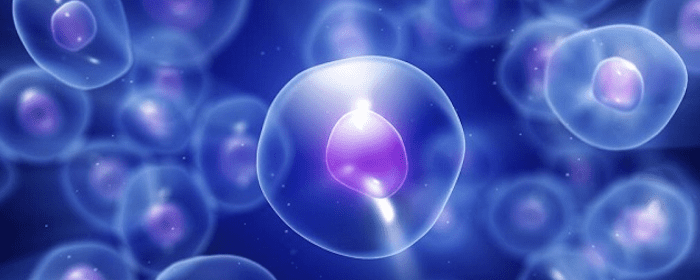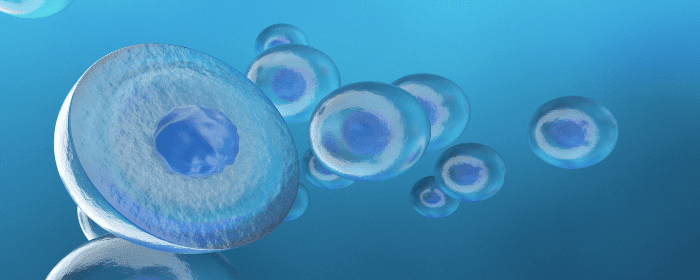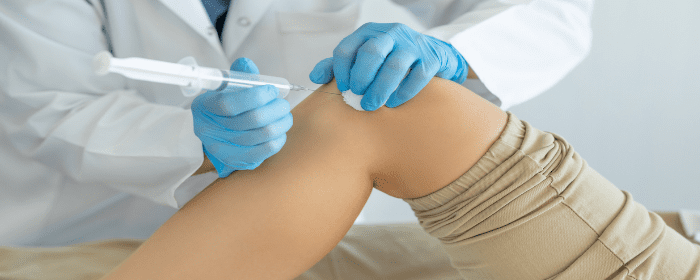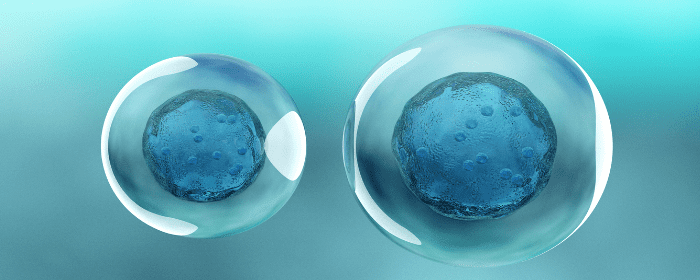
by admin | Jul 12, 2023 | Adipose, Mesenchymal Stem Cells, Regenerative Medicine, Stem Cell Therapy
Mesenchymal stem cells (MSCs) isolated from a wide variety of tissues and organs have demonstrated immunomodulatory, anti-inflammatory, and regenerative properties that contribute to a host of regenerative and immunomodulatory activities, including tissue homeostasis and tissue repair. The most frequently studied and reported sources of MSCs are those collected from bone marrow and adipose tissue.
In this review, Krawczenkjo and Klimczak focus on MSCs derived from adipose tissue (AT-MSCs) and their secretome in regeneration processes.
Adipose tissue is the most commonly used source of MSCs, primarily because it is easily accessible and is often a byproduct of cosmetic and medical procedures. Like most MSCs, AT-MSCs are able to differentiate into adipocytes, chondrocytes, and osteoblasts; they are also able to differentiate into neural cells, skeletal myocytes, cardiomyocytes, smooth muscle cells, hepatocytes, endocrine cells, and endothelial cells.
In addition, AT-MSCs secrete a broad spectrum of biologically active factors that serve as essential components involved in the therapeutic effects of MSCs, including the ability to stimulate cell proliferation, new blood vessel formation, and immunomodulatory properties; these factors include cytokines, lipid mediators, hormones, exosomes, microvesicles, and miRNA.
Preclinical and clinical studies on AT-MSCs in tissue regeneration were demonstrated to contribute to wound healing, muscle damage, nerve regeneration, bone regeneration, and lung tissue regeneration.
Evaluating these studies, Krawczenko and Aleksandra Klimczak conclude that AT-MSCs and their secretome are promising and powerful therapeutic tools in regenerative medicine, primarily due to their unique properties in supporting angiogenesis.
The results obtained by the preclinical and clinical studies evaluated for this review suggest that the ability of AT-MSCs and their derivatives, including EVs and CM, to deliver a wide range of bioactive molecules could be considered as factors supporting enhanced tissue repair and regeneration.
Source: “Exosomes in Mesenchymal Stem Cells, a New Therapeutic Strategy ….” https://www.ncbi.nlm.nih.gov/pmc/articles/PMC4308409/.

by admin | Apr 1, 2022 | Stem Cell Therapy, Adipose, Mesenchymal Stem Cells, Musculoskeletal, Wharton's Jelly
Articular cartilage, found on the surface of most musculoskeletal joints, distributes and transfers forces between bones and joints, provides a smooth surface for joint mobility, and plays an important role in human mobility.
However, articular cartilage is also easily susceptible to damage, but difficult to repair itself on its own (primarily due to the fact it is mostly avascular). Over time, the inability of articular cartilage to repair itself leads to progressive joint pain, disfigurement, movement disorders, and ultimately osteoarthritis.
The CDC estimates that nearly 33 million Americans are currently affected by osteoarthritis, most often in the form of pain, stiffness, decreased mobility and range of motion, and swelling in the joints[1].
Current treatment methods, including microfracture technology, autologous or allogeneic cartilage transplantation, and autologous chondrocyte implantation (ACI) have demonstrated the ability to repair and regenerate fibrous cartilage, but not articular cartilage required for smooth, fluid, natural mobility.
To address this issue, recent research has focused on the efficacy of stem cells, and specifically mesenchymal stem cells (MSCs) found in bone marrow, adipose tissue, synovial membrane, and umbilical cord Wharton’s jelly, as potential therapeutic treatments for regeneration of articular cartilage. MSCs are particularly of interest due to their demonstrated abilities of self-renewal, multi-differentiation, and immunoregulation.
While the use of MSCs has demonstrated tremendous potential in the field of regenerative therapy, one notable drawback continues to be unstable or suboptimal results resulting from the heterogeneity of various mesenchymal stem cells.
Specifically, the stability and efficacy of MSCs appear to differ based on a number of factors, including the donor, the tissue source, and their ability for proliferation, differentiation, and immunoregulation.
For example, some of the key heterological differences highlighted in this review include the efficacy of MSCs based on donor’s age (with younger donors providing higher quality MSCs), Wharton’s Jelly MSCs showing greater prospects for application in cartilage regeneration than other MSCs, and differences within specific MSC subpopulations.
The authors of this review acknowledge the potential of MSCs in repairing arterial cartilage, but also point out that there needs to be a deeper understanding of the heterogeneity of various MSCs in order to improve the efficiency of MSC-based therapies designed to repair arterial cartilage. In addition, the authors also call for greater standardization in MSC isolation and harvesting methods among laboratories in order to provide better consistency with respect to results obtained from studies using MSCs.
Source: “Heterogeneity of mesenchymal stem cells in cartilage regeneration.” 19 Mar. 2021, https://www.nature.com/articles/s41536-021-00122-6?elqTrackId=5517bd20493b470cb34fd0e8bc1f6ef9.
[1] “Osteoarthritis (OA) | Arthritis | CDC.” https://www.cdc.gov/arthritis/basics/osteoarthritis.htm.

by admin | Dec 3, 2021 | Adipose, Mesenchymal Stem Cells, PRP, Stem Cell Research, Stem Cell Therapy
Osteoarthritis is the most common form of arthritis, affecting more than 900 million people around the world. Developing when the cartilage that protects your bones wears down, osteoarthritis (OA) most commonly affects the joints of the hand, hips, spine, and knees[1].
While current treatment for OA and related joint damage is focused primarily on managing pain and minimizing further damage, function, and quality of life issues, no preventative therapeutic treatment currently exists for preventing or rehabilitating the condition.
Recently, stem cell therapy has been found to be an efficient therapeutic approach for treating degenerative joint conditions, including OA. Specifically, mesenchymal stem cells (MSCs), from adipose cells have been demonstrated to be the most promising type of stem cell for treating osteoarthritis.
In this study, Bui et al. studied the outcomes of applying MSCs harvested from adipose tissue in an effort to evaluate the therapeutic potential when transplanted in patients with grade II and III osteoarthritis.
Building on the findings of previously published studies, the authors specifically evaluated the in vitro and animal model effects of platelet-rich plasma (PRP) on the differentiation of adipose-derived stem cells (ADSC).
Previous studies have demonstrated that PRP treatment of ADSCs promotes differentiation and proliferation into chondrogenic cells which resulted in improved healing of articular cartilage when ADSCs were pretreated with PRP. An additional study demonstrated the effects of PRP on the non-expanded stromal vascular fraction (SVF) in cartilage injury observed in an animal model, demonstrating significant regeneration of cartilage.
The aim of this clinical trial was to evaluate the efficiency and related side effects of non-expanded SVF when combined with PRP in treating OA grade II or III.
At the conclusion of Bui et al.’s study, patients demonstrated significant improvements in key measures, including improved joint function, decreased pain score, and improved gradual and consistent improvement observed in pre and post observations as measured by the Lysholm score.
As further evidence of the success associated with a therapeutic treatment combination of ADSC and PRP, post-treatment MRIs demonstrated cartilage regeneration and thicker layers of cartilage at the injured site after 6 months of treatment. In addition, all participating patients reported reduced pain levels after 3 months and 71% of patients demonstrated the ability to climb and descend stairs after 3 months. None of the patients participating in this study demonstrated infection, tumor formation, or any other side effect or complication as a result of this procedure.
As a result of their findings in this study, Bui et al. conclude that this therapeutic treatment method was successful in reducing pain, regenerating cartilage, and improving the quality of life for patients who participated. However, considering the small size of this study, the authors call for additional and larger-scale studies to confirm the potential for this promising, minimally invasive stem cell therapy for patients with osteoporosis.
Source: “Symptomatic knee osteoarthritis treatment using autologous adipose ….” 5 Oct. 2016, http://www.bmrat.org/index.php/BMRAT/article/view/11.
[1] “Osteoarthritis – Symptoms and causes – Mayo Clinic.” 16 Jun. 2021, https://www.mayoclinic.org/diseases-conditions/osteoarthritis/symptoms-causes/syc-20351925.

by admin | Nov 5, 2021 | Mesenchymal Stem Cells, Adipose, Stem Cell Research, Stem Cell Therapy
The immunosuppressive ability of mesenchymal stem cells (MSCs) coupled with their potential to serve important therapeutic roles in a wide range of immune disorders have resulted in a significant increase in the number of clinical studies examining the role of cellular therapy in a wide range of applications.
Of particular interest is MSCs’ ability to migrate towards inflamed environments, produce anti-inflammatory cytokines, and their ability to conceal themselves from the natural immune system.
As part of this review, Mishra et al. address the immunomodulatory properties and immunosuppressive actions of MSCs. The authors also summarize various responses of MSCs in treating a number of immune disorders, including inflammatory diseases, metabolic disorders, and diabetes.
Immunomodulation has been identified as one of the primary functions of MSCs, autocrine and paracrine activities, and evasion of innate immunity. When it comes to immunomodulation, and depending on their specific environment, MSCs have been demonstrated to be either pro or anti-inflammatory.
In certain situations, and when exposed to low levels of pro-inflammatory cytokines, MSCs have been shown to produce an enhanced immune response with neutrophils moving to the site of inflammation and acting mainly by phagocytosis. On the other hand, when part of the anti-inflammatory conditions, and especially in wounds, infections, and organ transplants, MSCs have successfully demonstrated the ability to suppress the immune response.
Research has demonstrated MSCs to have beneficial effects on many different disease models, including myocardial infarction, hepatic fibrosis, and cancer.
Interestingly, the authors of this review point out that, although adipose tissue is considered to be the preferred source of adipose-derived mesenchymal stem cells – specifically for its potential related to healing, tissue engineering, and hepatocellular carcinoma – the health of the adipose tissue appears to matter. Specifically, it appears that adipose tissue gathered from obese patients demonstrates the potential to be dysfunctional. Adipose tissue dysfunction resulting from overnutrition demonstrates an increase in serious LDL and VLDL which ultimately is thought to contribute to impaired multipotency of MSCs.
While Mishra et al. conclude that MSCs possess the potential for significant therapeutic benefits, they also call for future research with standardized and validated isolation and culture protocols with lineage differentiation and stimulation method to ease the animal and clinical studies. They also point out that in order to further understand the therapeutic potential of MSCS, additional study of cell modification, injection frequency, and dosages is required.
Source: “Identifying the Therapeutic Significance of Mesenchymal Stem Cells.” 6 May. 2020, https://www.ncbi.nlm.nih.gov/pmc/articles/PMC7291143/.

by admin | Dec 30, 2019 | Stem Cell Therapy, Adipose, Age Management, Mesenchymal Stem Cells, Stem Cell Research
Autologous stem cell treatments offer several advantages over other forms of stem cell treatment. In autologous stem cell treatment, a patient’s own stem cells are retrieved, processed, and injected back into the patient’s body. There is no need for a stem cell donor, and the entire procedure can take place in the same medical office. Since the patient’s own cells are used for an autologous stem cell treatment, there is no risk of disease transmission from a donor (because there is no donor) and no risk of rejection (because they are the patient’s own stem cells). Autologous stem cell treatments has some major benefits for the elderly.
Unfortunately, younger stem cells are better for
regenerative medicine than older stem cells are. Moreover, older people have
fewer stem cells that can be harvested than they did when they were younger. So
while autologous stem cell treatment is still advantageous, it becomes more difficult
to achieve as patients get older because their stem cells are fewer and less potent.
Making matters worse, older stem cells compete against more youthful stem
cells, making autologous stem cell treatments potentially even less effective
in older patients.
Fortunately, stem cell researchers are coming up with ways to make the most out of the stem cells that older patients still have. They still take a sample of tissue, such as fat, and harvest the stem cells contained within it. However, instead of injecting all stem cells from the sample (both older and youthful stem cells), researchers select and use only youthful stem cells. Furthermore, they make the treatments even more effective by injecting other substances (e.g. extracellular matrix) that help youthful stem cells survive, grow, and thrive.
To demonstrate the effectiveness of their approach,
researchers collected mesenchymal
stem cells from about a dozen older individuals aged 65 to 86 years old.
They then assorted the stem cells into different groups, separating youthful
from older stem cells. They then used special factors to help the youthful stem
cells grow, increasing the numbers by an impressive 17,000 times. So while only
8% of stem cells produced by older individuals are “youthful,” this laboratory
process increased those numbers to a point that they can be used for stem cell
treatments—even stored for future use!
The next phase of the research will be to inject these youthful stem cells into older patients and assess their effectiveness. However, even these preliminary results are exciting because they suggest that people of all ages can potentially benefit from autologous stem cell treatments, not just middle age and younger individuals.
Reference: Block, TJ et al. (2017). Restoring the quantity and quality of elderly human mesenchymal stem cells for autologous cell-based therapies. Stem Cell Research & Therapy. 2017 Oct 27;8(1):239.

by admin | Nov 15, 2019 | Adipose, Heart Failure, Mesenchymal Stem Cells, Stem Cell Research, Stem Cell Therapy
A myocardial infarction, commonly known as a heart attack, occurs when blood flow through the coronary arteries is blocked. A heart attack usually happens to people with atherosclerotic coronary heart disease, which narrows one or more of the coronary arteries. A blood clot becomes lodged in the narrowed artery, preventing blood from reaching the heart muscle. Because the heart needs a virtually constant supply of oxygen-rich blood to survive, an interruption in blood flow to the heart can quickly cause muscle cells to die. There has been much talk in the medical community of using stem cells to rebuild the heart after a heart attack.
Dead heart muscle cells cannot help the heart pump blood. Thus, people who suffer a heart attack are often left with “weak” hearts. Instead of strongly squeezing blood out of the heart to the rest of the body, a larger portion of the blood remains in the heart (i.e. reduced ejection fraction). People who have had a heart attack that reduces ejection fraction commonly develop a condition known as congestive heart failure.
People with congestive heart failure often have difficult lives. Congestive heart failure patients periodically experience exacerbations that require hospitalization. They are put on restrictive diets; their salt and fluid intakes are limited. They must also take several different medications to help the heart pump blood through the arteries to the body and keep fluid levels in the body low. These medications do not heal or replace dead heart muscle cells. Instead, they make the remaining cells work harder (or decrease resistance in the arteries, or help the body eliminate fluid through urination).
What is needed is a way to regenerate dead heart muscle cells. Fortunately, several research groups are working on ways to use stem cells to regenerate heart muscle cells so that heart attack patients can regain heart muscle function.
There have been at least 11 clinical trials studying the effects of stem cells on patients with myocardial infarction. The trials show that stem cell infusion into the vein, the coronary artery, or the heart muscle itself is safe and well-tolerated by patients. Notably among the studies, patients with acute myocardial infarction who received allogeneic human mesenchymal cells intravenously had a better ejection fraction, better heart structure, and better lung function after six months than those who received a placebo. In the APOLLO trial, patients with acute myocardial infarction who received adipose-derived mesenchymal cells had half the dead heart muscle cells than those who received a placebo (i.e. lesion volume was 50% lower in treated patients).
Phase III clinical trials are considered definitive (pivotal) evidence of benefit. In phase III C-CURE trial, patients with heart failure due to coronary artery disease received autologous mesenchymal cells (i.e. their own cells, specially prepared). Treated patients enjoyed significantly increased ejection fraction (heart-pumping ability) and better functional capacity and quality of life. Other Phase II clinical trials (ADVANCE, CONCERT-CHF, TRIDENT, POSEIDON-DCM) are ongoing.
These results are welcome news for patients who suffer—or will one day suffer—from a heart attack, an event that happens in 735,000 Americans every year.
Reference: Golpanian, S. et al. (2016). Rebuilding the Damaged Heart: Mesenchymal Stem Cells, Cell-Based Therapy, and Engineered Heart Tissue. Physiological Reviews. 2016 Jul; 96(3): 1127–1168







 St. Petersburg, Florida
St. Petersburg, Florida
